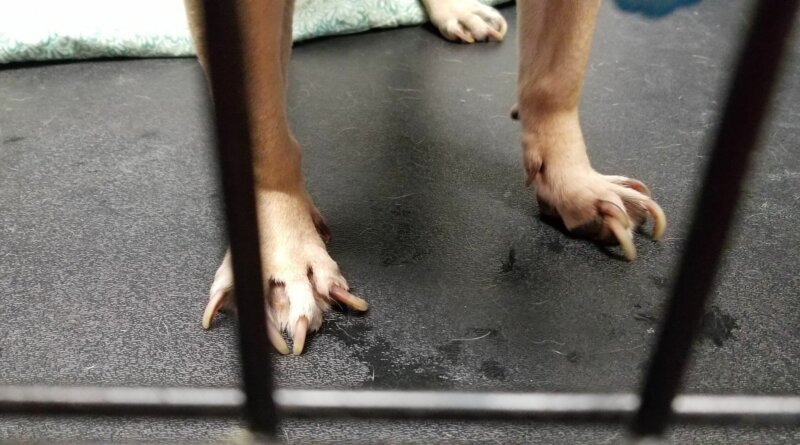A Dog Owner’s Risks and Responsibilities
I do things with my dogs practically every day that would make other dog owners frown with disapproval – and my friends and neighbors do things with their dogs that fill me with horror. The differences in how we live with and care for our dogs are vast and unquantifiable – and although the same could be said of the differences between how people raise their kids, I’ve noticed that dog owners are much more likely than parents to tell other dog owners – perfect strangers! – that they are doing things wrong with their dogs.
Of course, it’s a good thing for society if we care about how other beings are being treated – and even intervene in cases of cruelty or neglect. But I’m not talking about situations that rise to the level of blatant abuse; I’m talking about small daily practices that absolutely can have an effect on a dog’s health and well being and even lifespan – but the differences are small, unproven, and largely a matter of opinion.
There are a few things off the top of my head that I see people do with or to their dogs that I feel highly judgmental about:
- Letting their dogs get super fat; maybe this should be “making their dogs super fat.”
- Letting their dogs nails get super long.
- Letting their tiny or small dogs ride on their laps in the driver’s seat.
- Yanking, yanking, yanking their dog’s leash. Even more so if it’s attached to a choke chain or pinch collar.
- Allowing their intact dogs to reproduce indiscriminately.
- Keeping dogs on chains outdoors.
- Keeping pet dogs outdoors 24/7 (there are some working dogs who are happiest living outdoors, but if you have a non-working dog that you originally got as a pet, but keep them outdoors all the time…what’s the point?).
Here are a few examples of things I do with my dogs that might horrify some of you:
- I mostly feed them dry dog food.
- I put Seresto collars on them if fleas have been found on one of my dogs or I’m going to be hiking in tick-infested areas.
- My dogs rarely wear collars.
- I do not always have my dogs restrained in a seat belt or crate in my car.
- I sometimes tell my dogs, “No!”
- I walk my dogs off-leash in places known to be home to rattlesnakes.
- I sometimes allow my dogs to ride in the back of our pickup truck.
Okay, with that last one, I’m reaching a little. They only would be in the back of a truck for a very short distance on a dirt road, on our way to a trailhead in our local wildlife area, for example, and at a very slow speed. They enjoy this as much as any kid who has begged to ride in the back of a truck for a short distance under controlled conditions – probably more, given the way their noses go into overdrive, smelling all the wildlife smells. Even so, I have one friend who worries about this, and has admonished me on the way to a hike for allowing my dogs to do this – especially after hearing that one of my foster dogs once jumped out of the back of my moving truck. (For the record, we were only going about 5 mph on a dirt road with nobody else around for miles, and she immediately took off running for the lake that we were moving toward; she was fine!)

While I roll my eyes at my friend’s concern that my dogs could hurt themselves by jumping out of the back of the truck (at such slow speeds, and on a dirt road with no one else in plain sight for a half-mile), I myself have judged other people for having unrestrained dogs in the back of their trucks – on the highway, for sure, or even at 30 mph in town! Unrestrained dogs in trucks I’ve seen in regular town traffic – or, horrors, on the highway! – who are spinning in excitement, or running back and forth on a toolbox behind the cab, or running back and forth in the bed of a truck barking at other cars – yes, I’ve judged their owners! Because in my opinion, those dogs are at a high risk of falling off or out of the trucks, especially if the owner has to slam on the brakes, make a quick swerve to avoid hitting something, or if another driver runs a red light (for example) and runs into the truck with the loose dog. But those owners probably think my concern for their dogs is overblown, just like I think my friend’s concern for my dogs is excessive.
My “Never Would I Ever” Is Your “I Do That All The Time!” (and Vice Versa!)
I suppose that statistically, I could find some data to prove to the owners of unrestrained truck dogs that their dogs are at a real and quantifiable risk of falling out of the truck and being lost, injured, or killed. Any my friend might even be able to find data on injuries suffered by dogs who were allowed to jump heights that are equivalent to the back of my pickup truck. But what about practices that lack data that could confirm whether they are a danger?
The best example of this might be feeding your dog kibble. To hear it from some owners who feed a home-prepared or even a commercial fresh-food diet, dry dog food is tantamount to poison! And if they are not talking about dry food in general, they may be making strong statements about foods that contain a particular ingredient or come from a particular company or manufacturing plant. It should be obvious that there if there were any data to support the concept that dry food in general, or any specific dry food that’s on the market, actually kills dogs, it’s immediately removed from the market.
And to hear it from some veterinarians, the people who feed a home-prepared diet are the ones risking their dogs’ lives!
Anyway, my point is, there is no single correct way to feed, train, or care for our dogs. I may have strong opinions about some things, but I don’t think for a second that everyone should do as I do, or that people who do the things that I am horrified by should immediately turn over their dogs to the authorities. As long as a dog is not being overtly abused or neglected, we have to look the other way sometimes, and respect the fact that folks have the right to subject their dogs to conditions or risks that we might not – as difficult as that might be!
Are there things that you are judgmental about when it comes to other people’s dogs? When do you feel like you have to say something to them about it?



